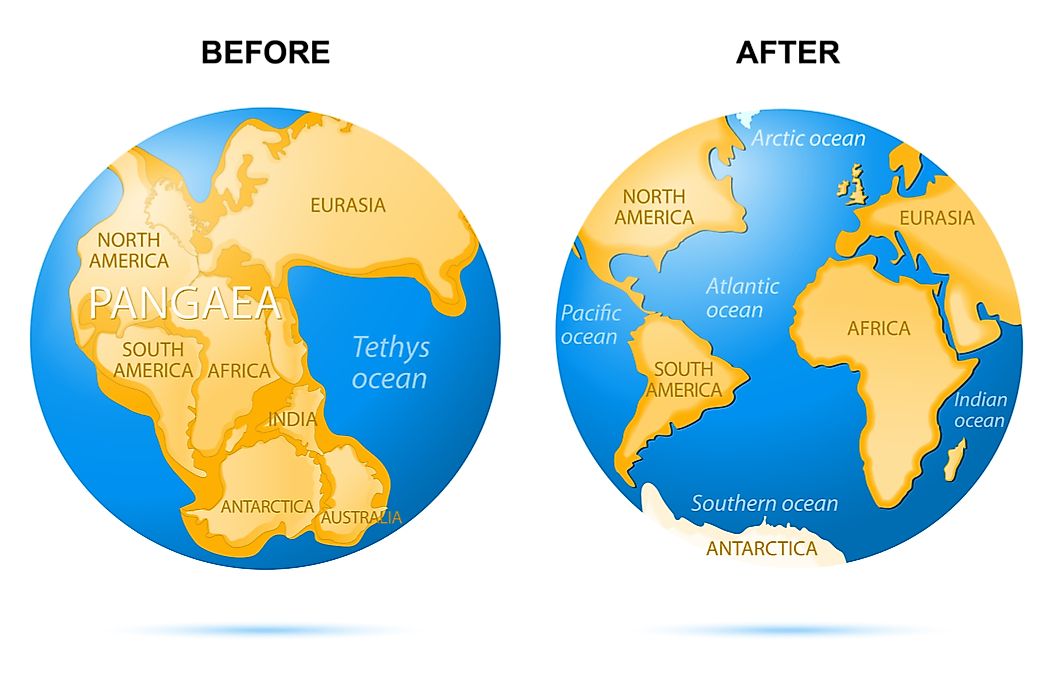What is Continental Drift?

Continental drift is a phenomenon which explains how the earth’s continents move on the surface of the ocean bed. Abraham Ortelius was the first geographer who proposed this phenomenon in 1596. The theory was independently developed in 1912 by Alfred Wegener, but it was rejected due to lack of mechanism (which was introduced by Arthur Holmes). The continental drift theory was replaced by the plate tectonic theory which illustrates how the continents drift.
The Continental Drift Theory
The hypothesis of continental drift was developed during the early parts of the twentieth century by Wegener. He believed that all eight continents were once a single supercontinent before separating. A number a geologists denounced his hypothesis after he published it in his book about the origin of oceans and continents in 1915. One of the reasons is that his theory had no credible mechanism. Another problem with Wegener's proposal was the fact that he stated that the velocity of continental drift was 8.202ft/year which is quite high (currently the acceptable rate of continental drift is 0.082ft/year). Wegner was a geographer and not a geologist, and other geologists believed that he did not have sufficient evidence.
Although his observations about the rocks and fossils were correct, Wegener was wrong on various issues. He believed that the continents plowed through the crust of the ocean. Even though the continental drift hypothesis was discarded, it did help introduce the idea of continental movement in geosciences. Decades later, various geologists confirmed some of his ideas including the existence of a super-continent known as Pangaea. Pangaea is believed to have been formed about 250 million years ago.
One of the outstanding questions which Wegener failed to answer was what type of forces propelled the earth’s plates, and this resulted in his hypothesis being opposed by many scientists. Later, a British geologist known as Arthur Holmes championed this theory. In 1931 Holmes proposed that the mantle of the earth has some convention cells which dispersed radioactive heat which drifted the earth’s crust. Jack Oliver provided the seismologic proof which supports the idea of plate tectonic that replaced continental drift in an article which he published in 1968.
Evidence of Continental Drift
Some of the evidence supporting the continental drift of the tectonic plates include the presence of similar animals and plant fossils on the shores of various continents, which suggest that they were once joined. Fossils of a freshwater reptile known as Mesosaurus was found both in South Africa and Brazil. Another piece of evidence is of the discovery of the fossils of Lystrosaurus (a land reptile) on rocks of the same age in Antarctica, India, and Africa. Some of the existing evidence includes numerous earthworm families like Octochaetidae and Acanthodrilidae which are indigenous to both in Africa and South America. The complementary arrangement of the facing sides on Africa and South America is also another evidence which supports the idea of continental drift.











